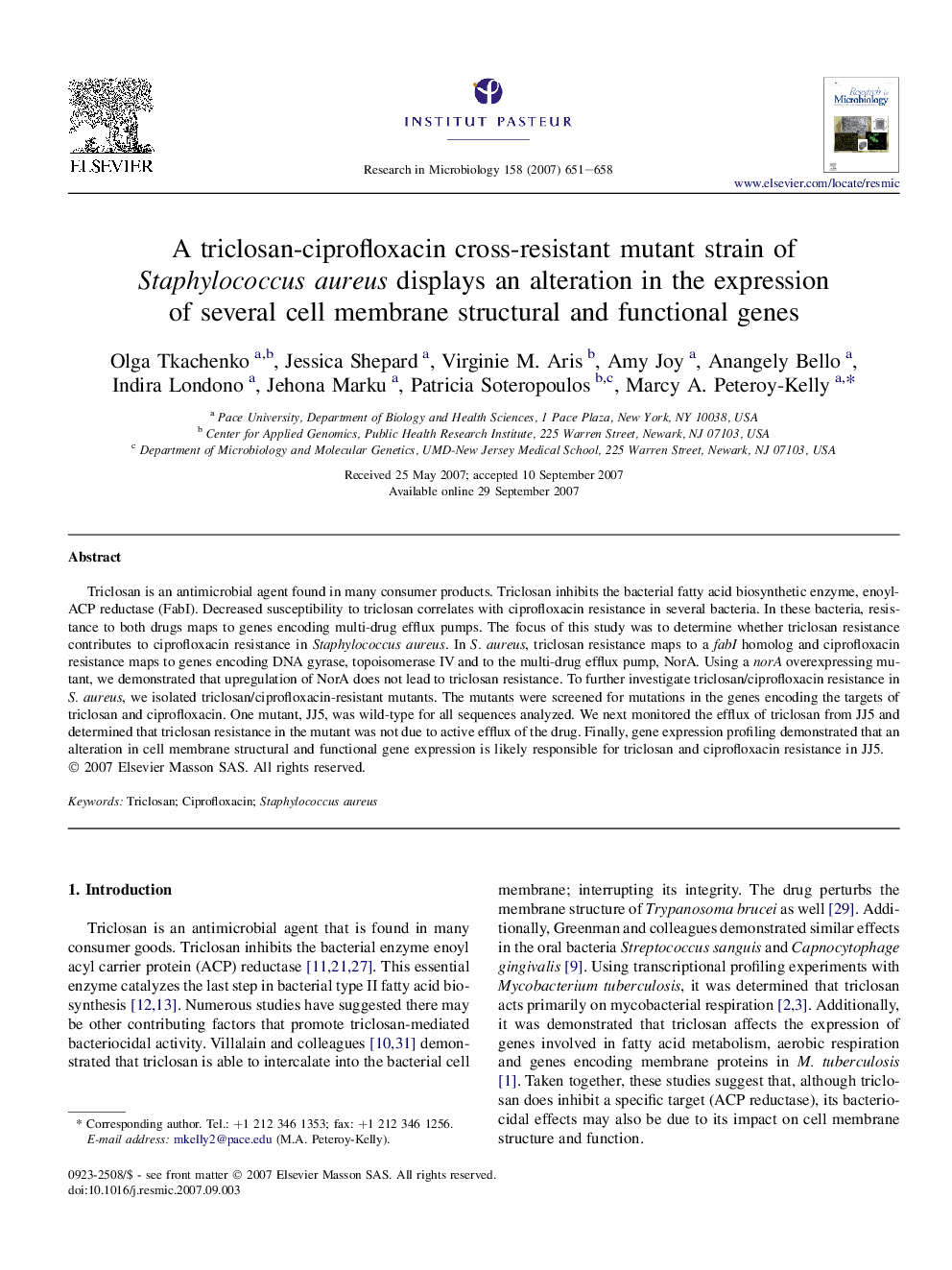| Article ID | Journal | Published Year | Pages | File Type |
|---|---|---|---|---|
| 4359410 | Research in Microbiology | 2007 | 8 Pages |
Triclosan is an antimicrobial agent found in many consumer products. Triclosan inhibits the bacterial fatty acid biosynthetic enzyme, enoyl-ACP reductase (FabI). Decreased susceptibility to triclosan correlates with ciprofloxacin resistance in several bacteria. In these bacteria, resistance to both drugs maps to genes encoding multi-drug efflux pumps. The focus of this study was to determine whether triclosan resistance contributes to ciprofloxacin resistance in Staphylococcus aureus. In S. aureus, triclosan resistance maps to a fabI homolog and ciprofloxacin resistance maps to genes encoding DNA gyrase, topoisomerase IV and to the multi-drug efflux pump, NorA. Using a norA overexpressing mutant, we demonstrated that upregulation of NorA does not lead to triclosan resistance. To further investigate triclosan/ciprofloxacin resistance in S. aureus, we isolated triclosan/ciprofloxacin-resistant mutants. The mutants were screened for mutations in the genes encoding the targets of triclosan and ciprofloxacin. One mutant, JJ5, was wild-type for all sequences analyzed. We next monitored the efflux of triclosan from JJ5 and determined that triclosan resistance in the mutant was not due to active efflux of the drug. Finally, gene expression profiling demonstrated that an alteration in cell membrane structural and functional gene expression is likely responsible for triclosan and ciprofloxacin resistance in JJ5.
